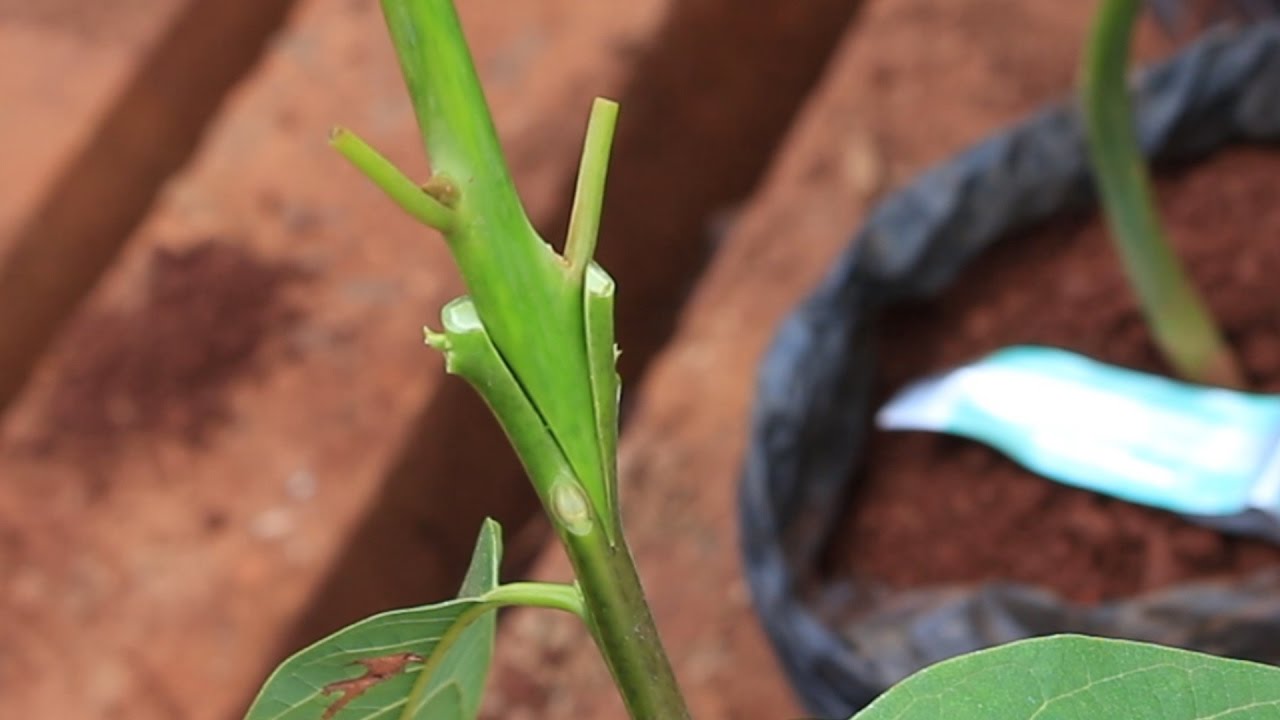
Grafted avocado seedling. Grafting has now become farmer’s silver bullet in saving them from incessant pest and disease woes.
Ongoing poor yields has pushed scientists and farmers together to accelerate the uptake of grafting as a permanent solution.
This has been caused by over population in the number of human beings and livestock increasing rates of land degradation and has forced households to farm on more marginal and less productive soils As a result, more than half of the world’s 1.5 billion hectares of arable land is moderately or severely degraded leading to low crop yields, according to Tegemeo Institute of Agricultural Policy and Development research.
Across tomatoes, mangoes, and avocadoes, the process of grafting has now become farmer’s silver bullet in saving them from incessant pest and disease woes, and is now no longer confined to laboratories but being applied in farms across Africa, following moves by Kenya Agricultural Research Institute and other NGOs to promote the practice among farmers.
With only a sharp razor blade, farmers are now growing two sets of plants in seed beds, the variety that they want for the fruit, and a special rootstock variety that grows strongly and is resistant to diseases and pests.
RELATED ARTICLE: Factsheet on grafting crops
When the two sets reach a similar size where they produce a set of leaves, farmers cut the stem of both, and attach the scion plant - the plant they want the fruit from - to the rootstock plant attaching a clip or a clean polythene paper that holds them together. The two stems grow together and as the cut eventually heals a grafted plant flourishes.
The seeds of the now disease resistant plant acquire the same traits. This is proving especially beneficial to farmers who rotate their crops that they can grow their plant in any soil without worrying about soil-borne pathogens. After the graft is complete, the plants are kept in the dark for two- to four-days and gradually exposed to light for the next week or 10 days.
“The word of caution, however, is that you have to use clean tools like the razor blade or the knife and they need to be sharp. When you are cutting the stem, the plant is still at its infancy and susceptible to germs, which if introduced at that particular stage would mean the germs will affect their growth,” said Steve Karanja a scientist at the Kenya Agricultural Research Institute Thika.
RELATED ARTICLE: How grafting can help citrus farmers beat EU chemical regulations
Karanja argues that grafting is effective, and cheaper than replanting, with grafting costing about 75 per cent less than putting in a new planting to achieve disease resistant plants.
Farmers are also recording impressive results in increased yield from grafted crops and in reduced dependence on pesticides.
Mbari ya Mboche farmers group in Kandara Division of Thika District have reaped the full benefits of grafting, having invested in it in their horticultural gardens. The growth of their market across both local and international sales saw them search for a farming method that would draw more returns, but with minimum investment in tackling pests, diseases and low quality crops.
RELATED ARTICLE: Grafting watermelon provide protection against soil-borne diseases increasing yields
They were introduced to grafting by a scientist at KARI Branch and have now transformed the output from their over 3 acres, as well as managing to conform with the stringent European regulation that require farmers exporting to the UK to embrace quality, traceability and conformity in horticulture farming.
Avocado is among Kenya’s most grafted plants and is in high demand as an export fruit.
More than four fifths of the avocado trees in Kenya are of the Fuerte variety that is relatively low in oil content but with superior disease resistant traits. Farmers are now learning how to graft it with the oil rich Hass variety that is in high demand globally. This guarantees an interrupted supply of the avocado.
“We used to have erratic harvesting patterns due to pests interfering with our plants. Our records now show that for the 24 months we have embraced grafting we have never had erratic harvesting cycles and we have recorded over 35 per cent increase in our harvests sold to exporters,” said Mwangi Ndege, chairman of the Mbari ya Mboche farmers group.